Art World
With Tourism on Hold, the de Young Museum Turned to Its Backyard With an Open-Call Show for Local Artists. The Response Was Epic
Curators received an overwhelming response to an open call for work from artists in the San Francisco area.
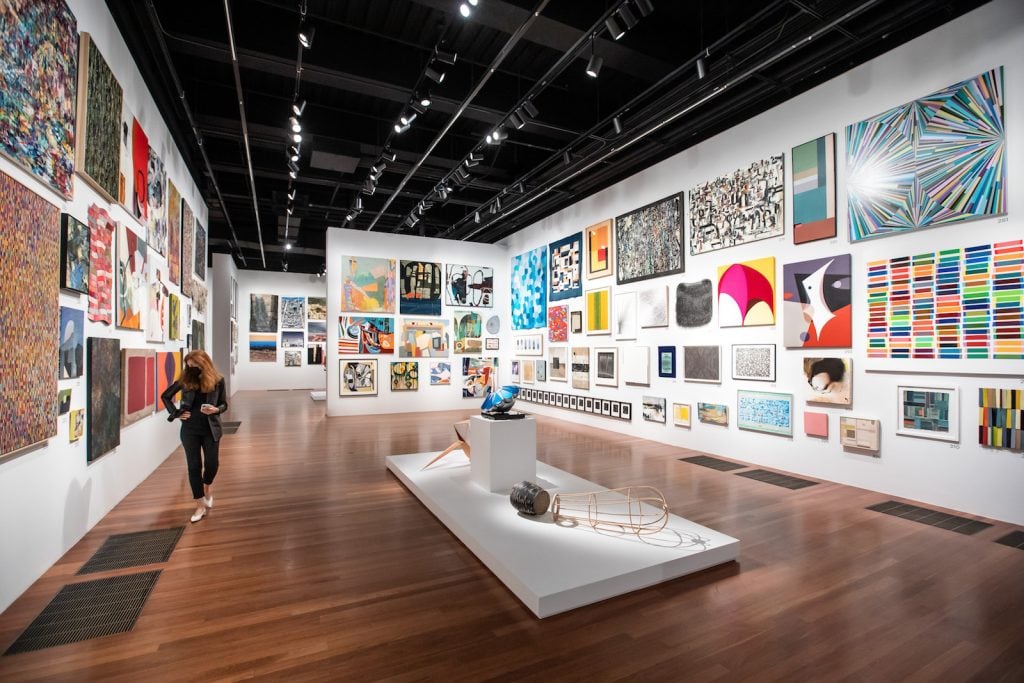
Curators received an overwhelming response to an open call for work from artists in the San Francisco area.

Brian Boucher

When San Francisco’s de Young museum first announced an open call for an invitational exhibition, curators expected a few hundred submissions. Instead, some 6,000 artists sent in 11,500 works.
“The de Young Open” marks the 125th anniversary of the Fine Arts Museums of San Francisco, which oversees the de Young as well as the Legion of Honor.
“People talk about the arts in LA all the time, but since getting here two years ago, I’ve been struck by the number of artists in the Bay Area,” Thomas Campbell, the director of Fine Arts Museums of San Francisco, told Artnet News. “This seemed like an opportunity to celebrate the creative talent and to look to what artists are saying.”
A jury including four museum curators, along with Bay Area artists Enrique Chogaya, Mildred Howard, and Hung Liu, selected 877 works based on images, and the winners then dropped off their work at the museum’s curb. In order to pack as many artworks into the 12,000-square-foot gallery space as possible, curators installed them wall-to-wall, floor-to-ceiling.

Fine Arts Museums of San Francisco staff assist artists Kim Young Min and Danny Purtill on artwork drop-off day. Photo by Gary Sexton, courtesy Fine Arts Museums of San Francisco.
The show, which runs through January 3, 2021, may serve the museum just as much as it serves the area artists, Campbell said. With the collapse of tourism worldwide, “Everyone is talking about how museums need to double down on community, and this is one very effective way of doing so,” he said. “We’ve been so pleased that we’re thinking of making it a triennial event.”
The de Young and the Legion of Honor, Campbell pointed out, are municipal institutions, established with a goal of serving the community. To that end, the museum recently made Saturdays admission-free for Bay Area residents, which has doubled attendance and brought in a more diverse audience on Saturdays. “We’ve also started a podcast called “Local Voices,” which brings people from the Bay Area into discussion with our collections,” he said. “We’re going to have artists who are featured in the exhibition in dialogue with the judges and the curators.”
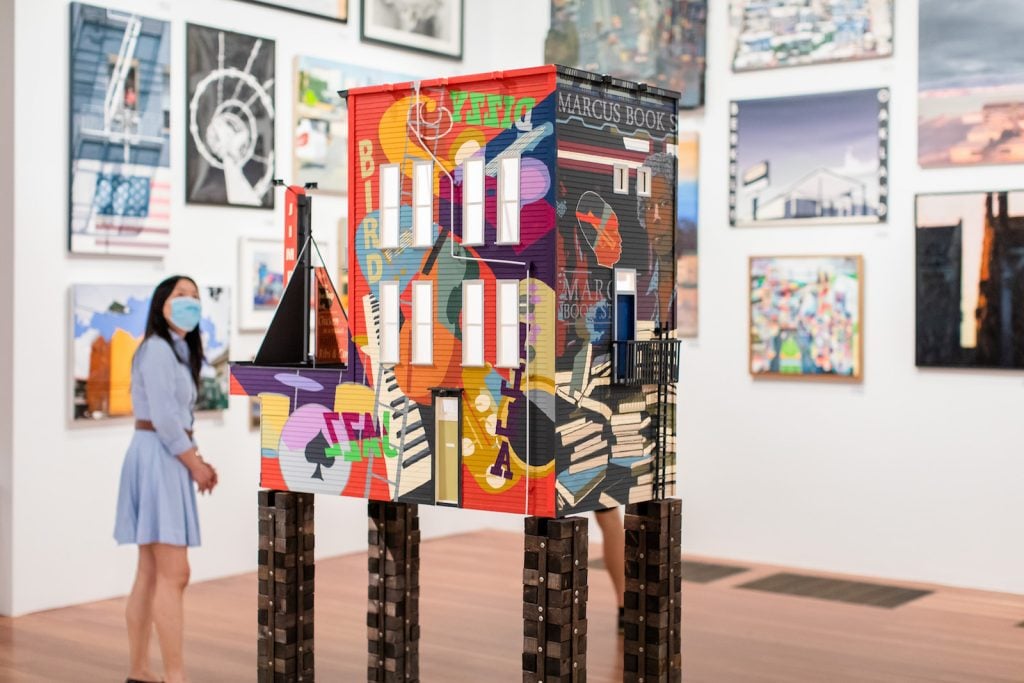
The de Young Open. Photo by Gary Sexton, courtesy Fine Arts Museums of San Francisco.
The show is divided into galleries by subject, and since the museum required that the works be of recent vintage, many were bound to deal with our topsy-turvy moment.
“Although the parameters allowed for works that were made over the last two years, the paint was still wet on a lot of them as they came in, and there is a lot of a strong emphasis on reacting to the moment,” said Campbell. “The first gallery as you walk in is about political protest. Those are some of the works that are made most recently, whether meditations on the killing of George Floyd or images of protests in the streets, or other reflections on the state of the nation, which are raw in every sense.”
Some galleries are devoted to traditional subjects, like portraiture, or local issues, such as exorbitant real estate prices paired and an explosion of homelessness. But a room devoted to the virus and its many effects was a foregone conclusion. That gallery is “very visceral,” Campbell said. “There’s everything from a Florentine Mannerist–style allegory of death to a Basquiat-like image of a Zoom call to visual diaries where the artists have made a different painting or object every day.”
It’s not just moral support that the invitational exhibition offers Bay Area artists. Unlike at most museum shows, the works are for sale, with all the proceeds going to the artists. Shoppers can head to the exhibition’s website, where they’ll find all 877 works, with the artist’s email address, a price, and, sometimes, an artist statement. Museum visitors can get the same information by scanning a QR code with their phone. (Buyers deal directly with the artists; the museum does not act as intermediary.)
“There is just something so inspiring and exuberant about seeing so many different styles and artistic sensibilities after so many months of a diet of digital images,” said Campbell. “I’ve walked through the show about 40 times, and each time I come out with a spring in my step.”
See below for more images from “The de Young Open.”
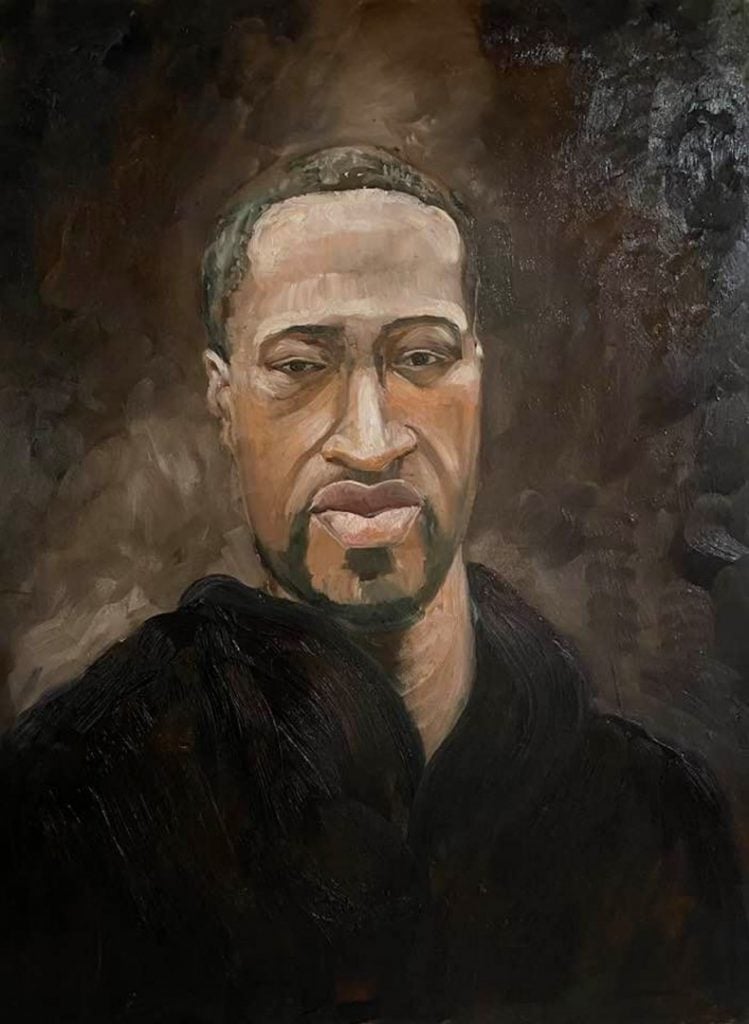
Thomasina DeMaio, Mr. George Floyd.
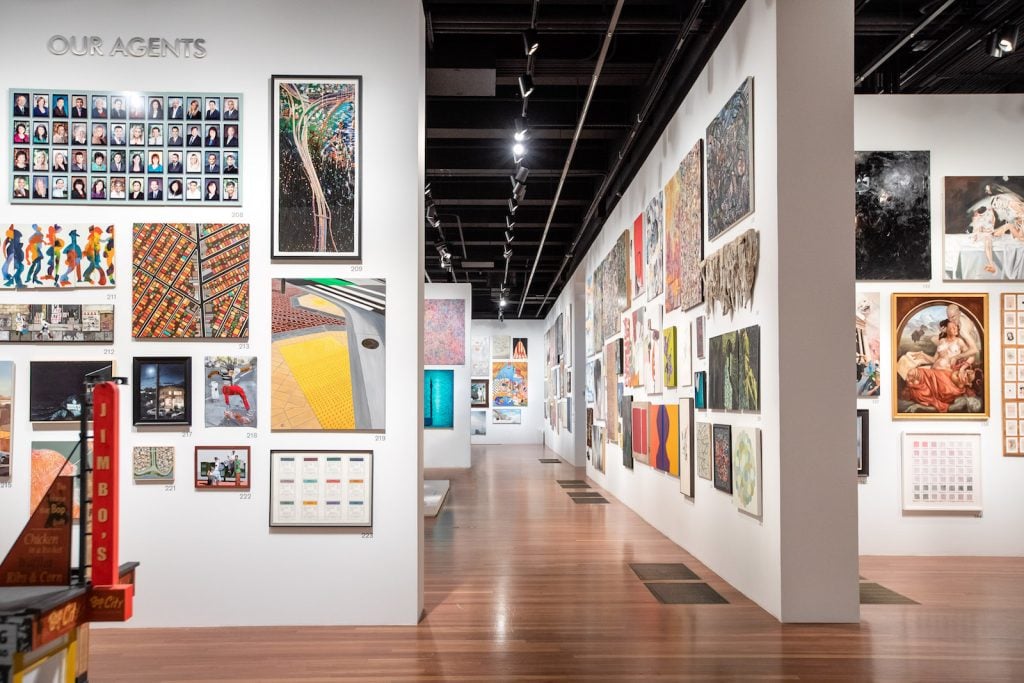
The de Young Open. Photo by Gary Sexton, courtesy Fine Arts Museums of San Francisco.
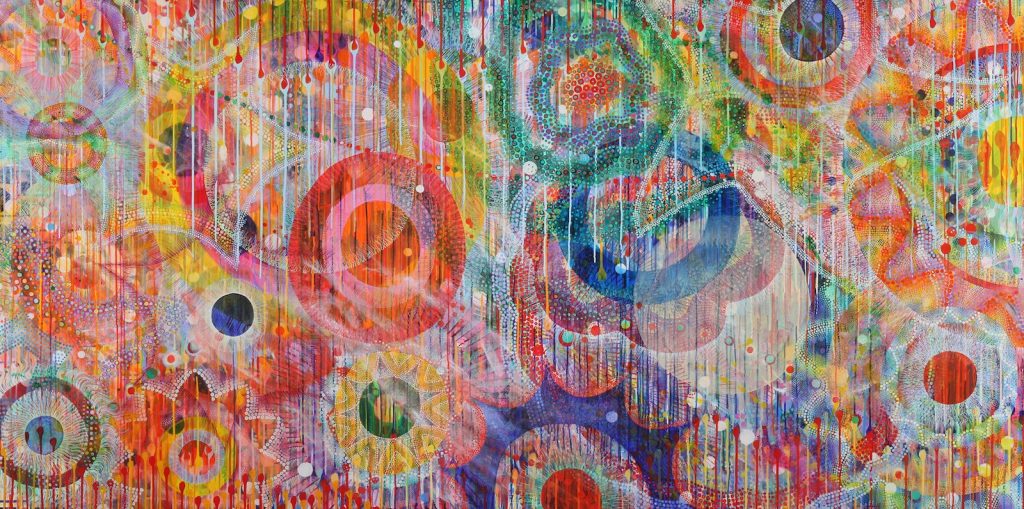
Paul Jermann, Lionheart (2020). Courtesy of the artist.
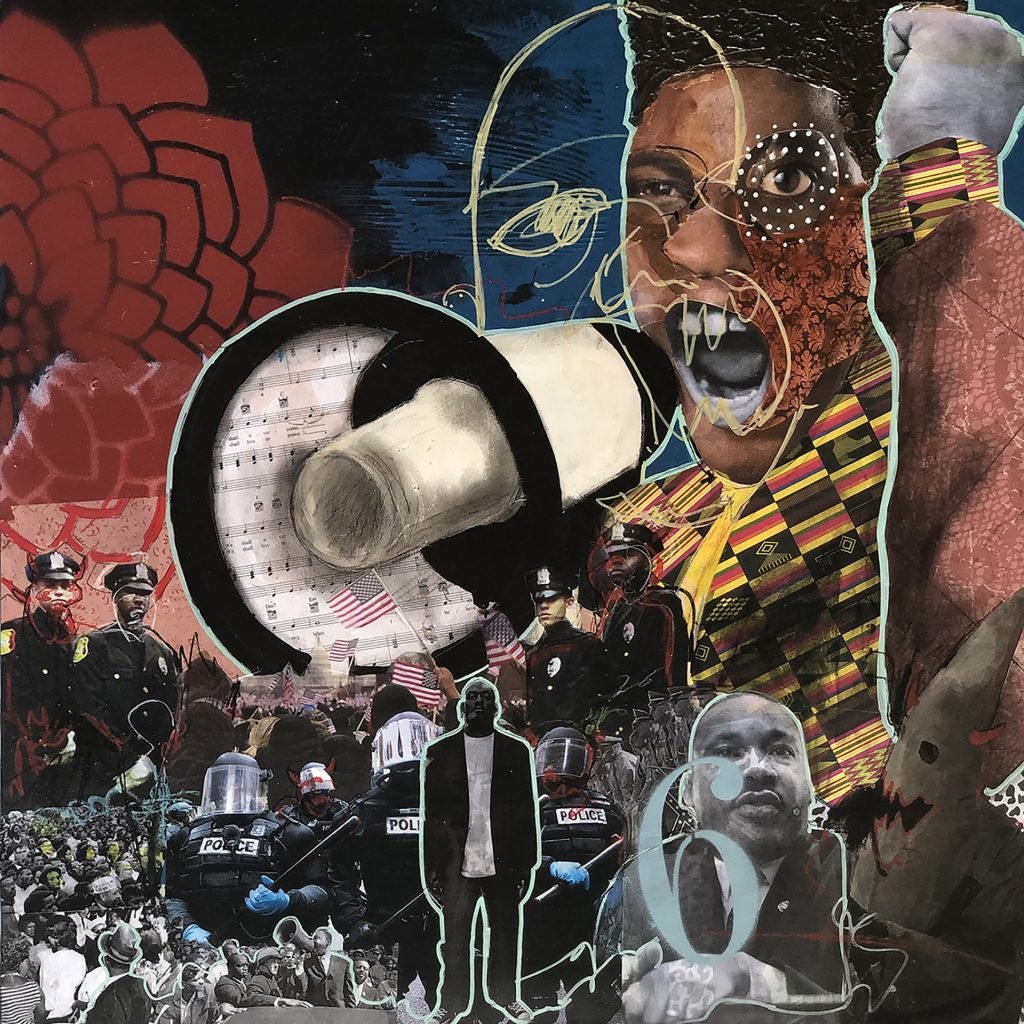
Orin Carpenter, Sick and Tired (2020). Courtesy the artist.
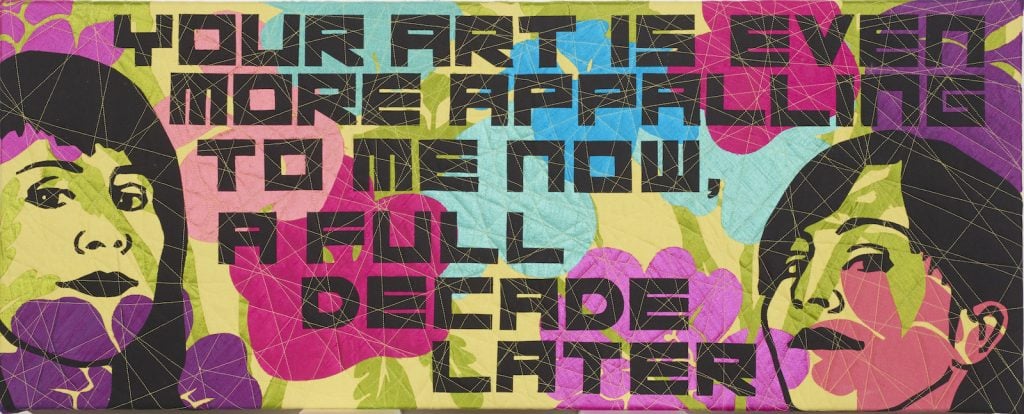
Amy Ahlstrom, Full Decade Later (2018). Photo by Jorge Bachmann, courtesy of the Fine Arts Museums of San Francisco.
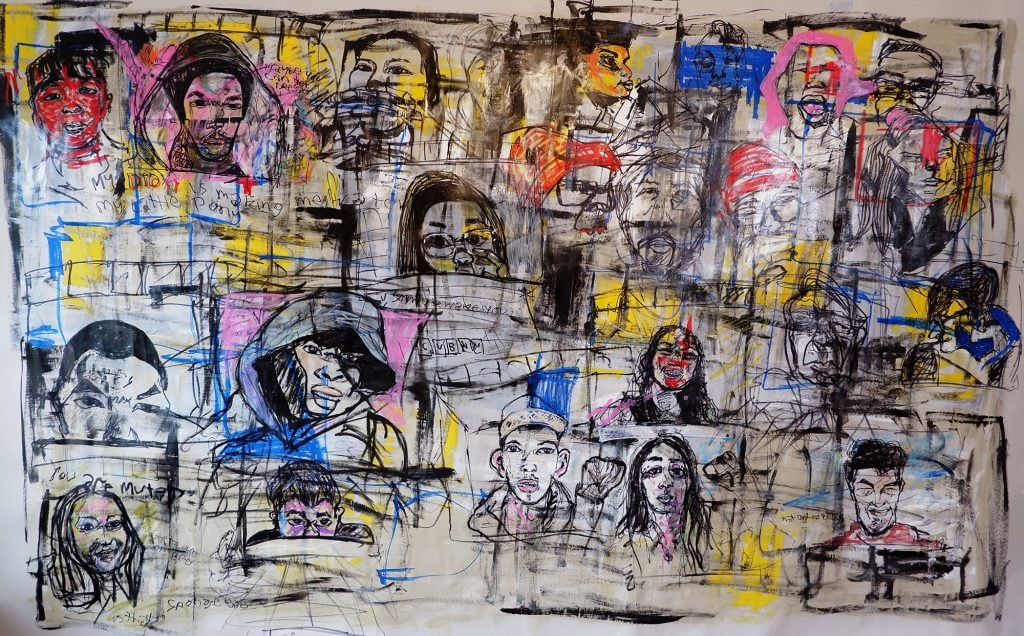
Monica Tiulescu, Zoom (2020). Courtesy of the artist.
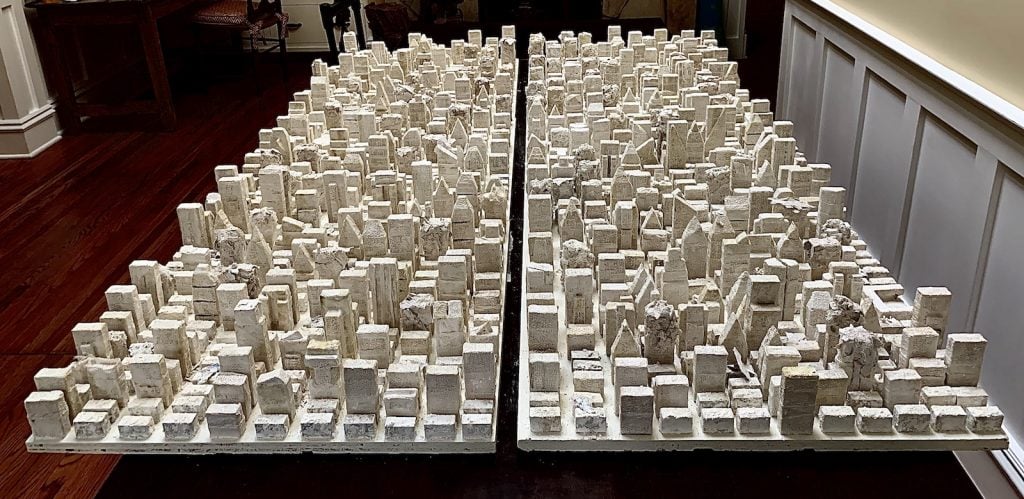
Robert Foster, Number 61: And Then the World Changed, 2020, courtesy of the artist.

Lisa Levine, Blue Mary’s House (2019). Courtesy of the artist.